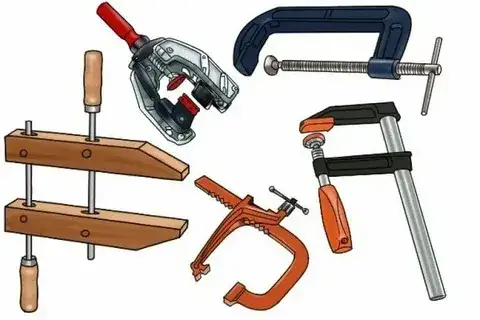This is a comprehensive guide about all types of clamps that hold two or more objects together. However, their main purpose is to prevent the objects from slipping and moving while the work is being processed. It is used for countless applications, from metalworking to automated repair to construction. Well, there are various types of clamps available in the market, which are chosen according to the functions and materials required.
Well, the safety of panels from shifting or detaching during installation is very important. That is why bend metal roofing sheets are used in modern roofing systems, depending on the types of clamps to hold them firmly in place. But, in this, the most important thing is to choose the right type of clamps. That is why we are here to discuss different types of clamps to help you choose the most suitable one for your project.
SCOOP IN THIS GUIDE TO UNDERSTAND DIFFERENT TYPES OF CLAMPS AND ANALYZE WHICH ONE IS SUITABLE FOR YOUR CONSTRUCTION PROJECT!
What are clamps?
The clamps are hand tools that are developed to bind two or more objects together. It is used to hold different materials together or glue them to prevent slipping. As an example, you can take wood, paper, plastic, or certain metals.
To put it simply, it is a mechanical device that holds objects clearly in one place. This gadget applies pressure to prevent any type of movement of materials. You need to understand all its types and sizes for carrying out specific tasks.
What is the purpose of using clamps?
- Hold material during cutting, drilling, welding, or gluing to ensure accuracy and safety.
- Stop the movement or change of workpiece during construction, woodwork, or metalwork.
- Ideal for temporary setups and test adaptation without a permanent connection.
- Maintenance of the layout of joints or components until fasteners or glue are applied and specified.
- Press for simultaneous binding surfaces, especially in woodworking or lamination.
- Supporting fixtures in repeated production or mounting processes.
- Secure 3D printing, CNC machining, or hedging parts during other automatic construction work.
Various Types of Clamps!
1) F Clamps
F-clamps look like a long vertical bar with two smaller perpendicular jaws. However, it is famous among complex and heavy-duty projects.
Plus, it is ideal for wider workpieces, with a sliding arm for adjustable pressure.
2) G/C Clamps
GC clamps look like a G shape, which is also sometimes known as a C clamp. It is one of the most used and versatile styles. It can be used to connect an object to the work surface or two different objects at the same time.
Different styles also have a neck with different depths, which is a distance from the screw to the inside of the frame. This type usually varies from 3″ to 14″.
3) Spring Clamps
This type of clamp uses grippers and handles to hold different parts together. However, it is suitable for small and light-duty holding tasks.
Plus, the jaw usually includes soft plastic or rubber pads, which are used for protecting objects or materials. They are usually used to hold delicate objects in woodworking and carpentry.
4) Sash Clamps
This type of unit has a flat bar with a certain jaw, which can be adjusted with a screw action. It also has a smooth grip locked in place with the bar. This style is mainly used for jobs connected to large objects, such as windows, doors, or furniture, and many are usually needed at a time.
5) Toggle Clamps
Toggle clamps work closely with a work surface, such as a scope. It is designed to roam in place and is permanently attached to the work surface. Plus, it can also be adjusted to accommodate objects of different sizes.
You can choose any clamp that aligns with your needs easily. But, to handle finances, it is highly recommended to rely on a professional construction estimating company. They provide accurate and updated estimates to contractors and builders.
YOU CAN CONSULT OUR PROFESSIONAL ESTIMATORS AND GET ACCURATE ESTIMATES FOR YOUR CONSTRUCTION PROJECTS, INCLUDING CLAMPS!
Final Words!
To sum it up, all types of clamps are unique depending on the material and required holding force. It is better to understand all of them, whether you’re working in woodworking, metalworking, construction, or even medical and laboratory settings. Hence, having the right information simplifies the overall work and provides high-quality results!

